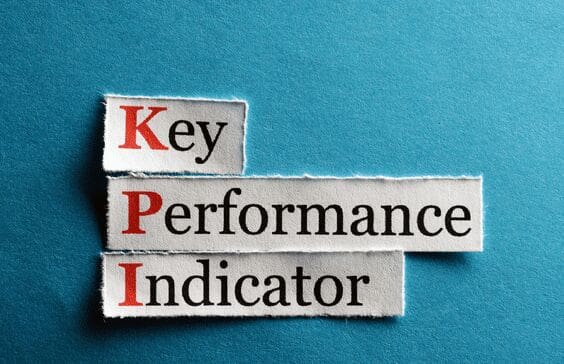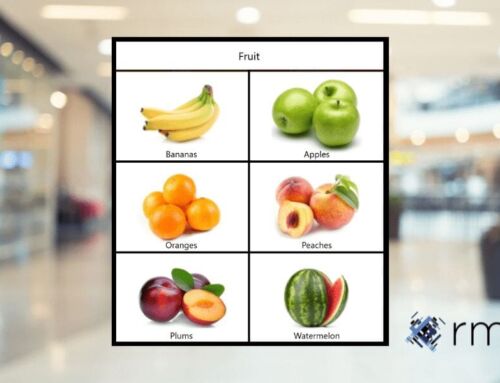Author
RMS Marketing Team
Share
6 Retail KPIs You Should be Tracking

Retail KPIs are quantifiable measures of performance over time which demonstrate how effectively a business is reaching its goals. They provide targets to aim for, milestones to gauge, and insights that help businesses make better decisions and move forward at a strategic level. KPIs also provide a focus for operational improvement, an analytical basis for decision making and help focus attention on what matters most so that you can grow your business effectively.
“If we can measure it, we can improve it.”
In this article we’ll take an in-depth look at six retail KPIs you should be measuring across your business and how to apply them to meet your business’ goals.
Retail KPIs
- Sales per square metre
- Average transaction value
- Inventory turnover
- Gross margin return on investment
- Conversion rate
- Customer retention
Sales Per Square Metre
Formula: Total net sales / Total square footage
While applicable only to bricks and mortar retail, the sales per square metre KPI tells you how effectively your retail space is being used and which areas of your store are performing best.
When tracked over time this measurement can help you to refine your store layout and product or point of sale displays, for example by putting your best sellers in prime locations and those crafty impulse purchase products by the checkout. The higher your sales per square metre, the more effectively you are using your retail space.
Bonus tip: Try heat mapping your sales per square metre data for a physical representation of your data which will help you to reorganise lower performing areas.
Average Transaction Value

Formula: Total sales / Total number of transactions
Average Transaction Value (ATV) is a crucial metric if you want to grow your business. It’s widely recognised that it’s much more expensive to attract a new customer than it is to sell to an existing customer so it stands to reason that convincing shoppers to spend more per transaction is a cost effective way to increase revenue.
Using clever merchandising strategies and applying the lessons learned from your sales per square metre KPI will help you to increase your ATV in-store, while loyalty programmes and targeted marketing campaigns can influence the amount each customers spends per transaction across all of your sales channels.
Inventory Turnover
Formula: Total cost of inventory sold / Average inventory cost
Inventory Turnover is a measurement for the speed at which your inventory moves and can help you to identify if you are holding stock for longer than necessary, thus draining your finances. Conversely, if your stock is flying off the shelves it could mean that you’re not properly capitalising on the demands of the market (hint: you could increase your prices).
Inventory turnover also helps to identify the slow movers before they become dead stock which you may need to sell at a loss or even write off. Identifying these stock issues before they become a significant problem means you can take action early and prevent losses as a result.
Gross Margin Return on Investment

Formula: Total gross profit / Average inventory cost
Gross Margin Return on Investment (GMROI) is a measurement of the money you get in return from your investment in stock. Or in other words, how many pounds you get back for every pound you spend.
You can track GMROI in three ways:
- Specific products
- Product categories
- Your entire inventory
When used at entire inventory level, it’s a good marker of success if this figure is stable or on an upward trajectory over time. At category level this KPI can help you to identify which categories are most profitable and use this to influence your stocking decisions. Drill down further into product level and GMROI can tell you which products are worth stocking at all and which aren’t worth the effort.
Overall, GMROI is a useful tool to help identify the areas you should and should not be investing your money in.
Conversion Rate
Formula: Total conversions / Total number of interactions * 100
Conversion rates are a percentage of the number of meaningful interactions which result in sales and provide invaluable insights into which exchanges effectively turn potential buyers into actual customers.
This metric also throws up some interesting sub-metrics which are certainly worth tracking:
- How long a customer takes to convert
- Which locations and sales channels have higher conversion rates
Understanding conversion metrics allows you to tailor your sales and marketing processes to match the customer journey. For example, if your sales team has a better understanding of how and when customers are most likely to buy, they can use this to tailor their sales approach. This retail KPI can be applied to individual sales people, sales teams and sales channels in order to identify which combination of circumstances produce the best results.
Customer Retention

Formula: [(Total customers at end of period) – (Total new customers acquired during period)] / (Total customers at start of period) * 100
Measuring customer retention provides insights into the growth of your business over time. As your core customer base grows, opportunities to sell more to those customers do too. As mentioned earlier, it’s much less expensive to sell to an existing customer so retaining them is a sustainable and cost-effective method for increasing overall sales.
Retailers who look after their customers and reward them for their loyalty will experience higher customer retention and repeat business.
Key Takeaways
These KPIs are essential to understanding your business’ performance and help you to create effective strategies which support your growth goals. However, without the ability to gather and track this data easily, monitoring your KPIs can become a chore and errors can be made.
If you’re ready to start analysing these KPIs but your existing retail management solution isn’t capable of providing you with the data you need, speak to a member of our expert team and discover how OpSuite can help put this crucial information at your fingertips.
OpSuite is a flexible, scalable, cloud-hosted solution which allows you to efficiently and profitably sell across your single, multi or omni-channel business touchpoints such as physical store, and eCommerce website, from one system.
Why choose RMS?
RMS have worked with ambitious businesses for over 18 years, supplying tailored software solutions and EPoS hardware from the Shetland Islands to the Seychelles. We work with businesses in most retail verticals, contact us and discover how we can support your business to increase profits with the latest technology.
Key Terms
Share:
Sign up now for news and special offers!
Join our Newsletter
*We are collecting your email information in order to add you to our newsletter recipient list. You can unsubscribe from our communications at any time. You can do this by contacting us or by clicking the unsubscribe button on any of our communications with you.
You can find more information about the details we hold about you and the way we use them in our privacy policy, and you can access this here or we can send you a copy.




